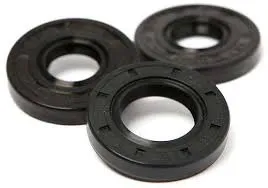10 月 . 09, 2024 12:26 Back to list
engine oil seal
Understanding Engine Oil Seals Their Importance and Maintenance
Engine oil seals play a critical role in the overall functioning and longevity of an engine. Often overlooked, these small yet vital components are responsible for maintaining the integrity of the engine's oil system. This article will explore the purpose of engine oil seals, common types, and essential maintenance tips to ensure your vehicle runs smoothly.
What Are Engine Oil Seals?
Engine oil seals are rubber or synthetic components designed to cover and protect the gaps between the rotating parts of an engine and its housing. Their primary purpose is to prevent engine oil from leaking out of the engine, which can lead to various mechanical problems. Oil seals are strategically placed around critical components like the crankshaft, camshaft, and transmission system to keep the oil contained where it needs to be.
Importance of Engine Oil Seals
1. Preventing Leaks One of the most significant functions of oil seals is leak prevention. Oil leaks can lead to a reduction in oil levels, resulting in inadequate lubrication of engine components. This can cause increased friction, overheating, and ultimately, engine failure.
2. Maintaining Pressure Oil seals help maintain the pressure within the engine’s oil system. Proper oil pressure ensures that every moving part of the engine is lubricated efficiently. Insufficient oil pressure can lead to oil starvation, potentially causing catastrophic damage.
3. Keeping Contaminants Out Oil seals also act as barriers against dirt, dust, and other contaminants that could enter the engine. By preventing these foreign particles from mixing with the engine oil, oil seals help maintain the quality of the lubricant and prolong the engine's lifespan.
Common Types of Engine Oil Seals
1. Crankshaft Seals Located at the front and rear of the crankshaft, these seals prevent oil from leaking out of the engine. They are crucial for maintaining proper oil levels and preventing leaks that can affect performance.
engine oil seal

2. Camshaft Seals Positioned at the ends of the camshaft, these seals also serve a similar purpose in preventing oil from escaping the engine while ensuring that oil can flow freely to lubricate other components.
3. Rear Main Seal This is a specific type of crankshaft seal located between the engine and the transmission. It is often subjected to high stresses and can be a common source of oil leaks in older vehicles.
4. Valve Cover Gaskets Although not strictly oil seals, these gaskets seal the top of the engine and prevent oil from leaking out around the valve covers. They play an essential role in keeping oil contained within the engine.
Maintenance and Replacement
Like any other mechanical component, engine oil seals can wear out over time due to factors such as heat, pressure, and exposure to engine oils. It is crucial to keep an eye on your engine for signs of oil leaks, such as puddles under the vehicle or wet spots around engine components.
Signs of Failing Oil Seals
- Oil Spots Puddles of oil under the vehicle or oil spots on the engine can indicate a leaking oil seal. - Increased Engine Noise A failing oil seal can lead to insufficient lubrication, resulting in increased noise from engine components. - Oil Pressure Warning Light If the oil pressure drops, it could be a sign of a failing oil seal.
Conclusion
Engine oil seals are essential components that contribute significantly to the proper functioning of your vehicle. Understanding their importance and regularly checking for signs of wear can prevent costly repairs and ensure that your engine runs efficiently. Regular maintenance, including oil changes and inspections, will help extend the life of oil seals and improve the overall performance of your vehicle. Remember, a well-maintained engine is the key to a long and reliable driving experience!